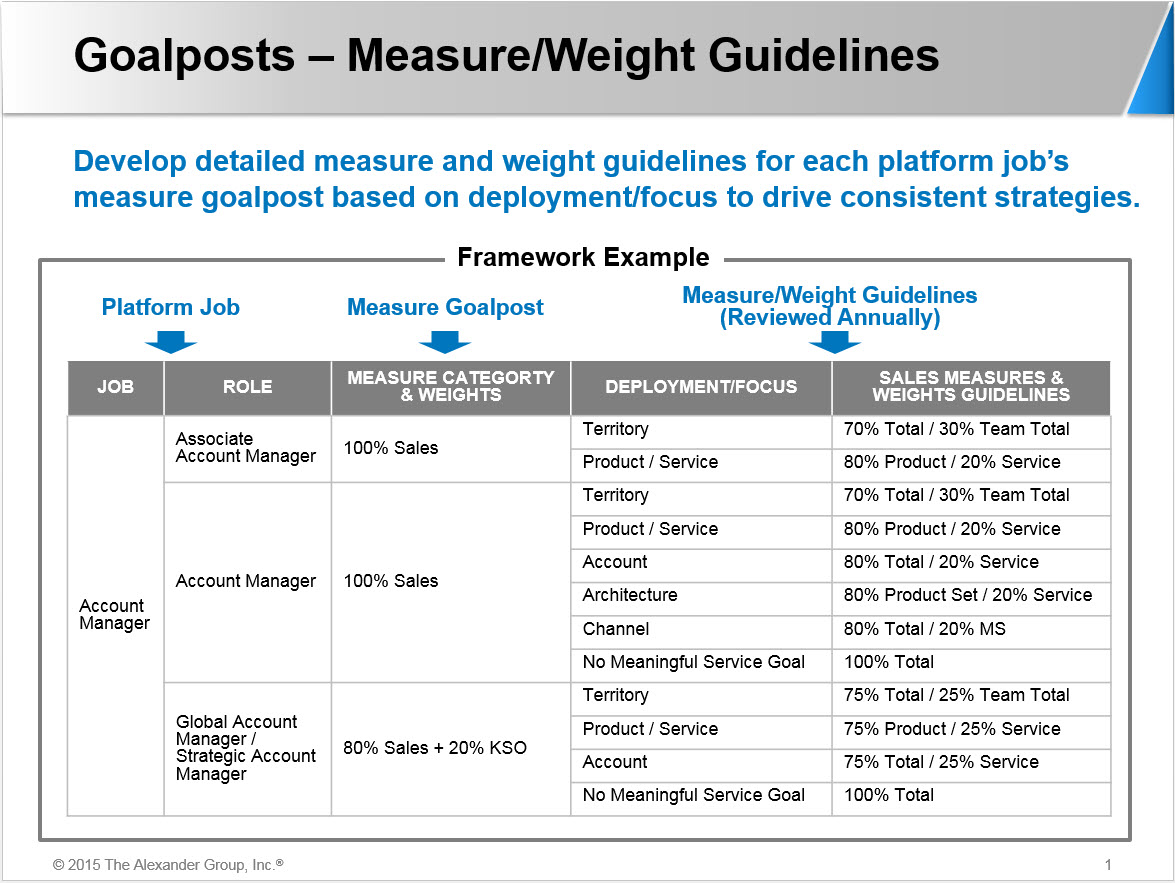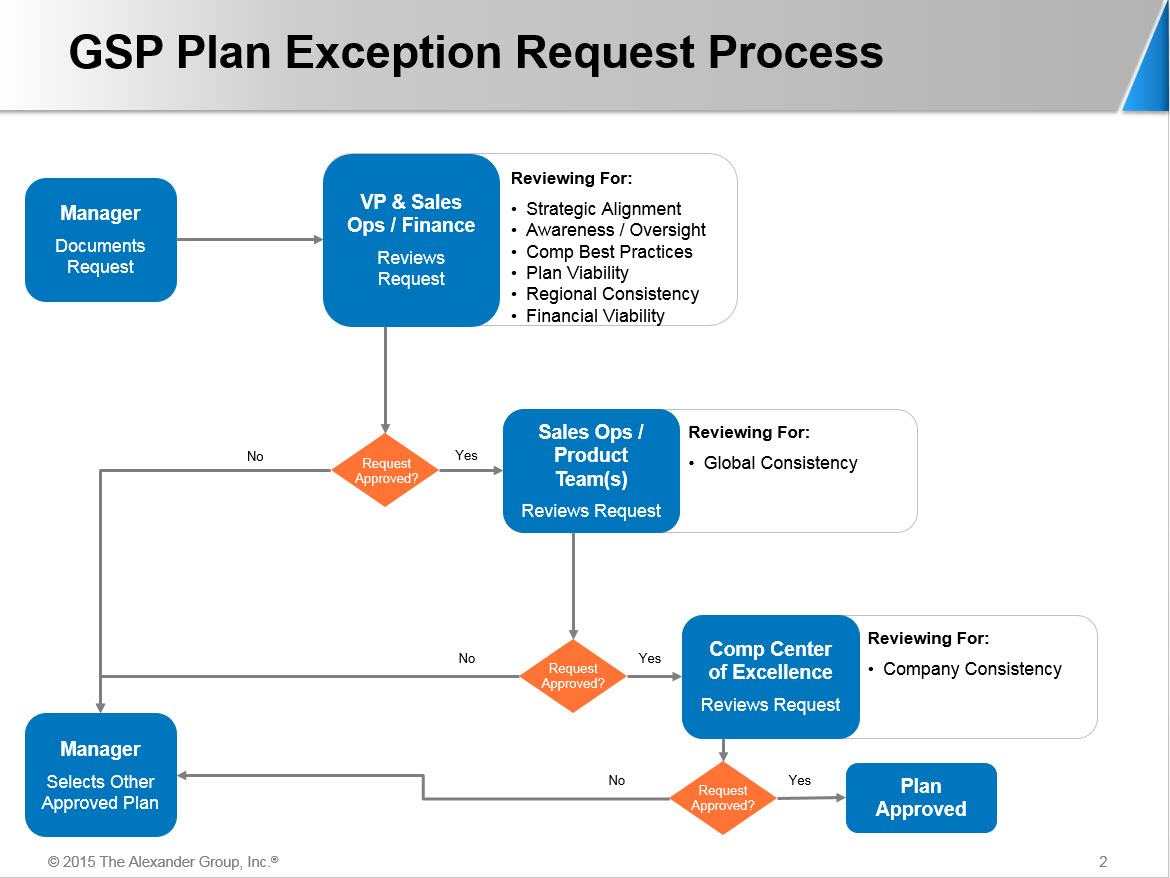Sales Compensation Goalposts: Global Solution Case Study
Global companies seeking to design effective sales compensation plans on a worldwide basis should employ platform jobs and design goalposts to reduce complexity and design cycle times. Platform jobs group together sales roles which are similar but not identical. Within each platform role multiple use-cases may exist reflecting unique strategic focus. Goalposts provide the range of sanctioned sales compensation design choices available to local sales entities. Here we examine a recent client’s need to create sales compensation goalposts for 20+ platform jobs across three geos.
With plan selection occurring at the first-line manager level, this client experienced an exceptionally long annual planning process: managers consistently selected plans which did not fit with the organization’s vision for individual goaling in these roles. The variations focused on the level and weightings of plan measures; consequently, the resulting negotiations were tedious and time-consuming for the Operations team who worked with managers to understand their requests and get individuals on plans which would satisfy both the needs of the field and the larger organization.
The Alexander Group was retained to help design and implement a process which would result in greater plan consistency globally as well as fewer cycles spent on the plan assignment process. After a set of initial planning meetings, the team determined the best course of action was to provide first-line managers with plan options determined by a role’s particular use cases, and guidance and training on when to select which option.
A plan of attack was developed to understand what use cases existed, how they should be goaled and what to do with exception requests.
Step 1: Identify use cases and current goaling plans
The first step focused on the company’s existing plan – which variations existed in each role. A series of interviews was conducted with sales management in all geos to better understand how each platform role was deployed. Differences in customer and product focus quickly bubbled up. Individuals in the same role might be focused on one division in a single account or a broad swath of smaller accounts; they might sell the entire portfolio or a single product line. These differences, as well as goaling methods, were cataloged into specific use cases.
Step 2: Assign measure levels and weighting to each use case
Secondly, a consistent set of guidelines needed to be created which identified a set of plan options for each role. These options were aligned to specific use cases and included with training materials to first-line managers, who were responsible for selecting plans for their reports. A committee of sales management from each geo, as well as Operations and Compensation Center of Excellence representatives, was assembled to vet each defined use case as well as assign plan measure guidance to each. All guidance was designed to fall within requirements defined by the global Compensation Center of Excellence. After a number of iterations, final goalposts and guidelines were approved and ready for delivery to field management.

Step 3: Design an exception request process
The final step in this journey was the creation of a process to handle individuals who did not fit any of the established use cases. The designed guidelines were appropriate in most cases, but given the global nature of the organization, exception requests did arise. Defined conditions were required to be considered and first were vetted by internal team leadership before moving to the global Compensation Center of Excellence for final approval. If the requests did not meet requirements for a unique plan, management were provided guidance in selecting a suitable plan from the established list.
The creation of these guidelines, as well as the robust involvement of stakeholders from across the organization – field, Operations, global Compensation Center of Excellence – drove significant adoption. In the plan’s first year in use, exception requests were about 30 percent fewer than the previous year; and the sales compensation planning process was tracking on-time, a significant improvement. Utilizing use case-specific plan guidelines, along with clear explanations why, can greatly decrease friction in the plan assignment process, drive consistency across global organizations and free up valuable time for both sales and operations functions.
If your company’s planning process can’t reach the end zone, contact the Alexander Group to learn how we help global organizations design and implement more efficient and cost-effective sales compensation processes.
Originally published by Michael Pap Rocki.
